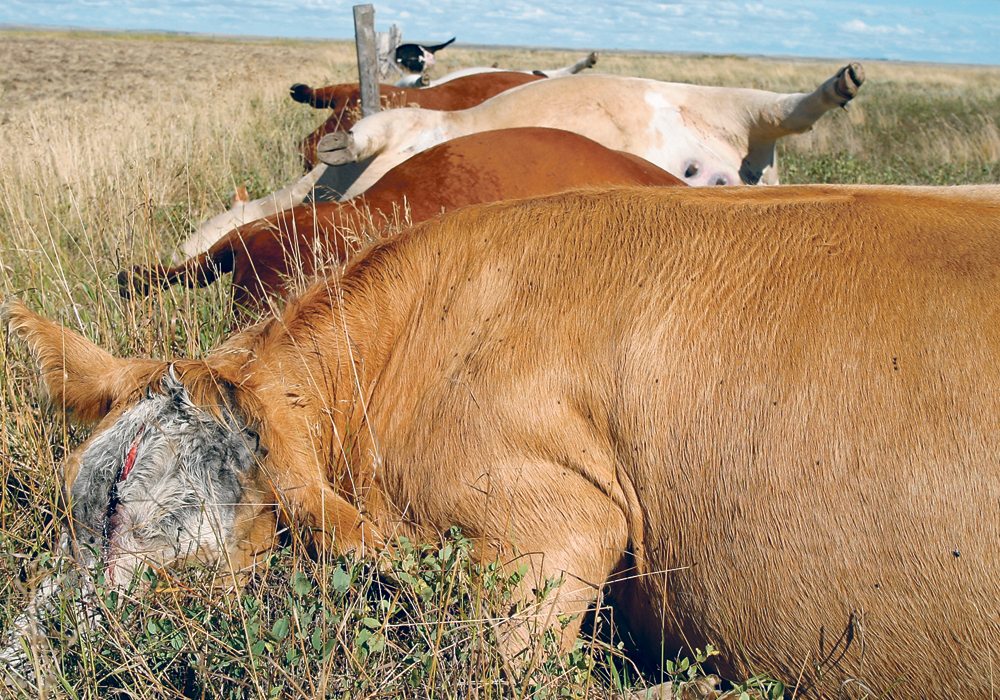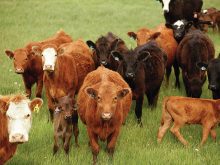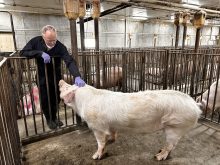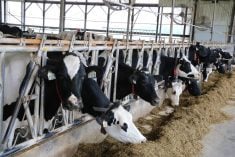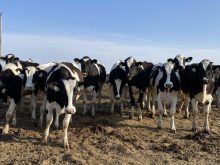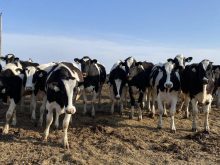The diesel engine snarled to life and I headed out of town. Reaching the feedlot, I rumbled past rows of feed bunks with various sized steers and heifers, placidly chewing their cuds or rummaging for grain in what would be their final home before entering the plant that would turn their flesh into beef.
An eight-foot upright plank wood fence segregated an area in the far back corner of the property. This is the dead pit, and on this day it contained five bovine carcasses of various sizes. Armed with a sharp butcher’s knife, a pair of pea soup green steel-toed rubber boots, an impervious pair of rubber over-pants and a washable camera to document my findings, I’m ready to give them their final examination.
Read Also

Beef check-off collection system aligns across the country
A single and aligned check-off collection system based on where producers live makes the system equal said Chad Ross, Saskatchewan Cattle Association chair.
To autopsy most animals, including cattle, I first cut through the skin and flesh of the armpit. This peels the front leg across the back and out of the way.
Next is a cut into the hip joint and a connecting incision through the skin to expose the belly muscles and rib cage. Using a battery-operated reciprocating saw, I enter the chest cavity and remove the right side of the rib cage.
Opening the carcass is what I refer to as the grunt work of the autopsy. What follows is the more refined, head-to-toe systematic examination of each major organ plus selected bones and joints.
Piece-by-piece and cut-by-cut, often up to my plastic-covered elbows in blood, pus and digested feed material, I’m looking for signs of abnormalities that may indicate disease. Is the tissue discoloured, softer than normal or twisted or turned out of place? Does it ooze pus when I slice into it? Are there parasitic worms in the lungs, guts or other organs? Is something there that shouldn’t be such as a tumour or abscess? It’s even more challenging to notice if something is missing.
Sometimes I find nothing at all — the tell-tale signs of disease are hidden to the naked eye and may reveal themselves only under the microscope.
On this day, the causes of death for these five cattle were obvious. One had broken a leg and had been put down. Four had pneumonia typical of bovine respiratory disease, which no amount of antibiotic was going to cure and is why they were euthanized.
Their infected lungs were heavy, wet and coated by tan-yellow material with the consistency and look of baked cheese. When I sliced into the lung tissue, fluid and pus oozed from the clogged airways. In other areas, the affected tissue was dark purple instead of its normal light pink colour, indicating tissue death and severe disease.
These individuals represented the most ill animals in the place and would never have made it to slaughter or the human food chain.
Some may question the wisdom of examining dead animals and the associated expense.
However, an autopsy examination can determine the cause of death in animals that die on their own or provides information about the disease in animals that were euthanized because of illness. If signs of disease aren’t clear, the autopsy is still valuable to understand what diseases are not present.
One autopsy provides information about the individual animal, but collectively, the results of multiple autopsies become useful data to producers and veterinarians.
Armed with the information about the ongoing disease processes and reasons for culling animals, people can make informed decisions about their management. For instance, did a specific treatment work as expected?
Knowing why animals die allows for choices about how to keep those that are living productive and healthy. And so I’ll continue my quest to understand death and disease, one autopsy at a time.
Dr. Jamie Rothenburger is a veterinarian who practices pathology and a PhD student at the Ontario Veterinary College. Twitter: @JRothenburger



